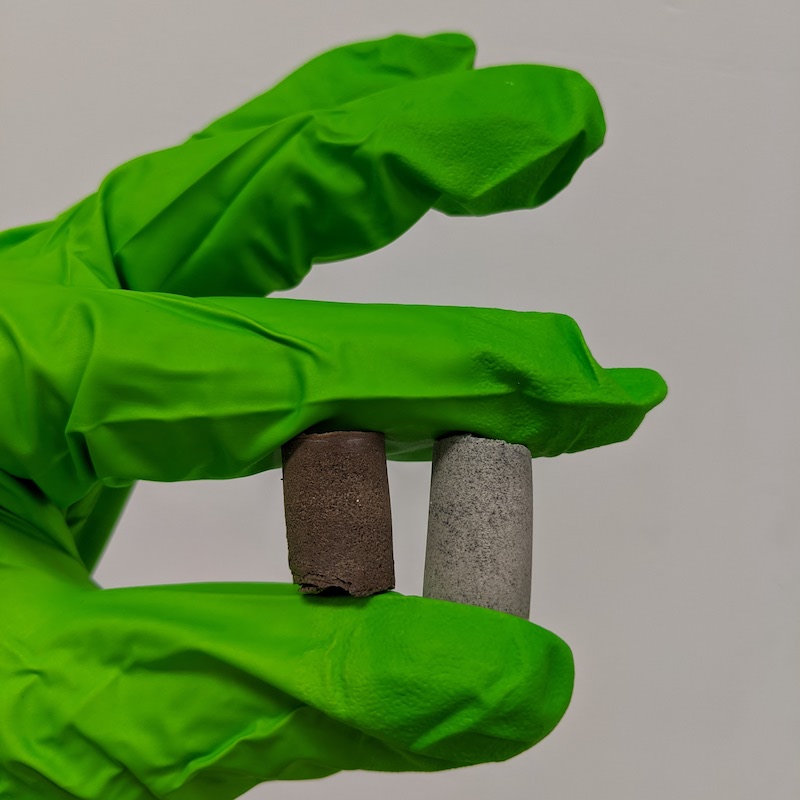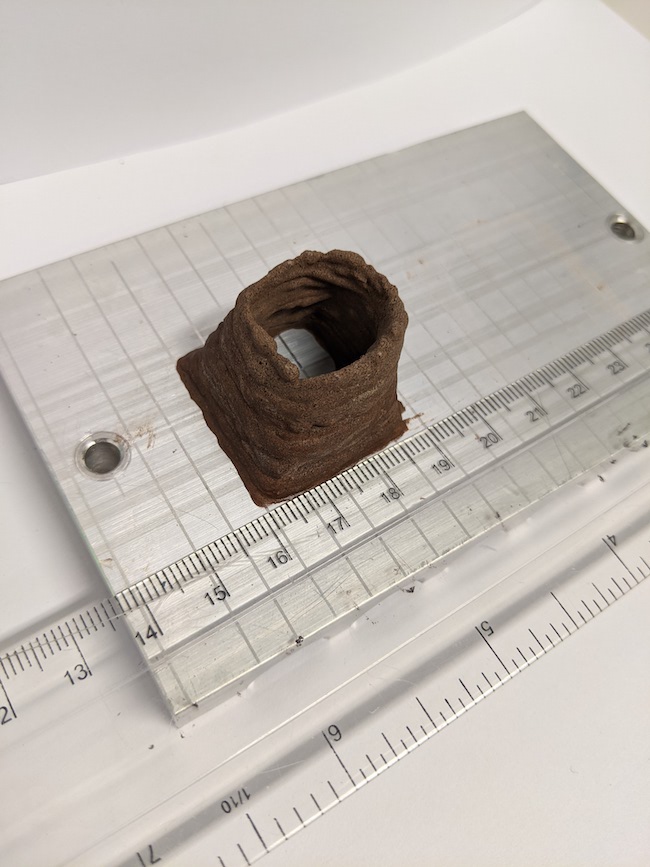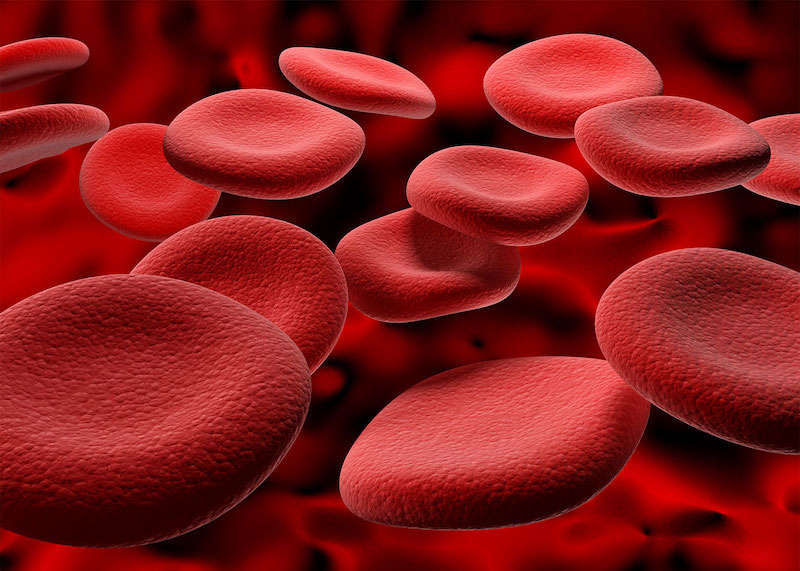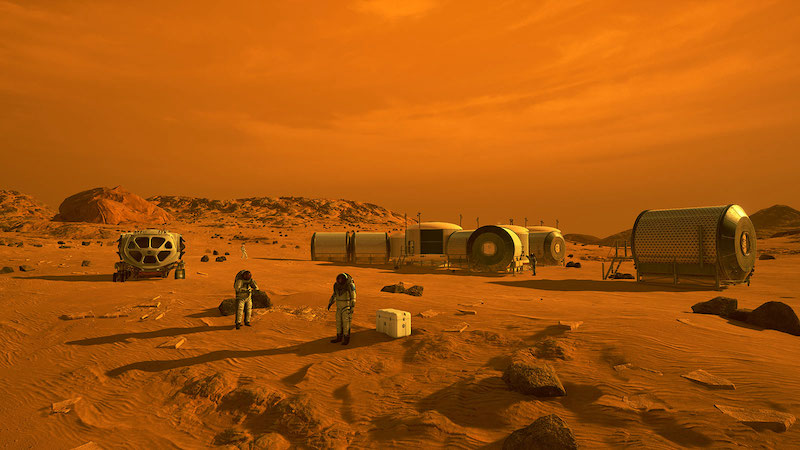
In order to create human habitats on Mars or the moon, we must overcome expensive engineering challenges. Transporting building materials from Earth would be time-consuming and cost prohibitive. Scientists at the University of Manchester in the U.K. announced on September 13, 2021, that they’ve come up with a unique solution. It involves combining the rock and dust found on Mars and the moon with, literally, blood, sweat and tears. It may not sound too hygienic, but the unusual kind of space concrete could be used to create homes for future astronauts living on and exploring those worlds.
The successful new experiments show that such materials can, in fact, be created. Scientists published the new peer-reviewed study in Materials Today Bio on September 10, 2021.
How to make space concrete
So how would they create this unearthly concrete, called AstroCrete? In the study, the researchers combined simulated Mars or moon dust with compounds from human blood, urine, sweat and tears. The results were a great success, producing a type of concrete that is even stronger than regular concrete. Intriguingly, the researchers found that the protein in blood plasma – called human serum albumin – could act as a binder for simulated moon or Mars dust. As the researchers wrote in the paper:
In essence, human serum albumin produced by astronauts in vivo could be extracted on a semi-continuous basis and combined with Lunar or Martian regolith to ‘get stone from blood’, to rephrase the proverb.
We believe that human serum albumin extraterrestrial regolith biocomposites could potentially have a significant role in a nascent Martian colony.

The material has compressive strengths as high as 25 MPa (megapascals), about the same as the 20–32 MPa seen in ordinary concrete. However, scientists increased the strength – by over 300% – by adding urea, a biological waste product the human body produces that excretes through urine, sweat and tears. That equals 40 MPa, significantly stronger than ordinary concrete.
New construction techniques
According to Aled Roberts from The University of Manchester, the new technique is a novel way to approach construction issues on Mars and the moon:
Scientists have been trying to develop viable technologies to produce concrete-like materials on the surface of Mars, but we never stopped to think that the answer might be inside us all along.

Scientists estimate that during a six-month stay on the Martian surface, six astronauts could produce over 500 kg of AstroCrete. If the concrete was used as a mortar for sandbags or heat-fused regolith bricks, then each astronaut could produce enough AstroCrete to expand the habitat to support one additional crew member.
Historical precedence
The idea of using human blood or other bodily fluids may seem weird or off-putting, but there is some similar historical precedence. According to Roberts, animal blood was also once used as a binder to make mortar:
It is exciting that a major challenge of the space age may have found its solution based on inspirations from medieval technology. The concept is literally blood-curdling.
The new research is a follow-up to a study last year, where an international team of scientists found that urea helps plasticize concrete. This makes it less brittle and more flexible, ultimately resulting in a hardier material that can better withstand mechanical stresses.


Future prospects for space concrete
The new techniques outlined above hold promise, although additional studies are still needed. As the paper notes:
Significant further investigation is still needed to determine the feasibility of the concept, particularly fatigue and durability evaluation under simulated Martian conditions (extreme thermal cycling, low pressures, high radiation, etc.) and the long-term health effects of continuous plasma donation in a reduced gravity environment. The quantity of HSA that could feasibly be extracted from astronauts without affecting their health would also need to be determined experimentally, and alternative options (e.g., use of plant-based proteins) should be explored. Despite this, we believe that HSA-ERBs could potentially have a significant role in a nascent Martian colony, but will eventually be superseded by versatile bioreactors or other technologies as they mature.
Bottom line: Scientists at the University of Manchester in the U.K. have developed a kind of space concrete – using dust and human blood – that could be used for future human habitats on Mars or the moon.
Source: Blood, sweat and tears: extraterrestrial regolith biocomposites with in vivo binders
Via The University of Manchester
The post Futuristic space concrete uses astronauts’ blood first appeared on EarthSky.
from EarthSky https://ift.tt/3nZygOx

In order to create human habitats on Mars or the moon, we must overcome expensive engineering challenges. Transporting building materials from Earth would be time-consuming and cost prohibitive. Scientists at the University of Manchester in the U.K. announced on September 13, 2021, that they’ve come up with a unique solution. It involves combining the rock and dust found on Mars and the moon with, literally, blood, sweat and tears. It may not sound too hygienic, but the unusual kind of space concrete could be used to create homes for future astronauts living on and exploring those worlds.
The successful new experiments show that such materials can, in fact, be created. Scientists published the new peer-reviewed study in Materials Today Bio on September 10, 2021.
How to make space concrete
So how would they create this unearthly concrete, called AstroCrete? In the study, the researchers combined simulated Mars or moon dust with compounds from human blood, urine, sweat and tears. The results were a great success, producing a type of concrete that is even stronger than regular concrete. Intriguingly, the researchers found that the protein in blood plasma – called human serum albumin – could act as a binder for simulated moon or Mars dust. As the researchers wrote in the paper:
In essence, human serum albumin produced by astronauts in vivo could be extracted on a semi-continuous basis and combined with Lunar or Martian regolith to ‘get stone from blood’, to rephrase the proverb.
We believe that human serum albumin extraterrestrial regolith biocomposites could potentially have a significant role in a nascent Martian colony.

The material has compressive strengths as high as 25 MPa (megapascals), about the same as the 20–32 MPa seen in ordinary concrete. However, scientists increased the strength – by over 300% – by adding urea, a biological waste product the human body produces that excretes through urine, sweat and tears. That equals 40 MPa, significantly stronger than ordinary concrete.
New construction techniques
According to Aled Roberts from The University of Manchester, the new technique is a novel way to approach construction issues on Mars and the moon:
Scientists have been trying to develop viable technologies to produce concrete-like materials on the surface of Mars, but we never stopped to think that the answer might be inside us all along.

Scientists estimate that during a six-month stay on the Martian surface, six astronauts could produce over 500 kg of AstroCrete. If the concrete was used as a mortar for sandbags or heat-fused regolith bricks, then each astronaut could produce enough AstroCrete to expand the habitat to support one additional crew member.
Historical precedence
The idea of using human blood or other bodily fluids may seem weird or off-putting, but there is some similar historical precedence. According to Roberts, animal blood was also once used as a binder to make mortar:
It is exciting that a major challenge of the space age may have found its solution based on inspirations from medieval technology. The concept is literally blood-curdling.
The new research is a follow-up to a study last year, where an international team of scientists found that urea helps plasticize concrete. This makes it less brittle and more flexible, ultimately resulting in a hardier material that can better withstand mechanical stresses.


Future prospects for space concrete
The new techniques outlined above hold promise, although additional studies are still needed. As the paper notes:
Significant further investigation is still needed to determine the feasibility of the concept, particularly fatigue and durability evaluation under simulated Martian conditions (extreme thermal cycling, low pressures, high radiation, etc.) and the long-term health effects of continuous plasma donation in a reduced gravity environment. The quantity of HSA that could feasibly be extracted from astronauts without affecting their health would also need to be determined experimentally, and alternative options (e.g., use of plant-based proteins) should be explored. Despite this, we believe that HSA-ERBs could potentially have a significant role in a nascent Martian colony, but will eventually be superseded by versatile bioreactors or other technologies as they mature.
Bottom line: Scientists at the University of Manchester in the U.K. have developed a kind of space concrete – using dust and human blood – that could be used for future human habitats on Mars or the moon.
Source: Blood, sweat and tears: extraterrestrial regolith biocomposites with in vivo binders
Via The University of Manchester
The post Futuristic space concrete uses astronauts’ blood first appeared on EarthSky.
from EarthSky https://ift.tt/3nZygOx

Aucun commentaire:
Enregistrer un commentaire